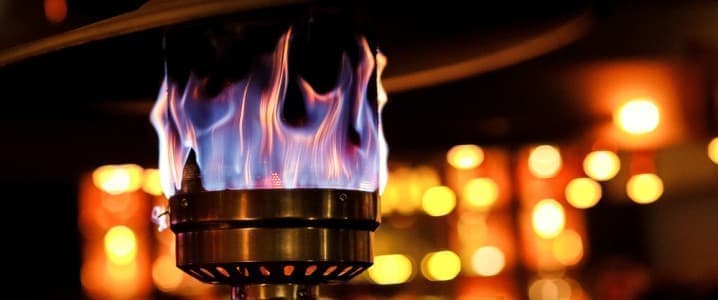There has been a lot of talk about moving away from natural gas stoves in favour of greener fuels over the last couple of years. Some cities, such as New York and San Francisco, have banned gas hook-ups to new buildings in the hope of phasing out gas-fuelled heating and cooking. Meanwhile, some recent studies have deemed natural gas stoves to be dangerous in confined spaces, such as small homes. However, some of the alternatives being promoted, such as green hydrogen, are far from ready for a commercial rollout. As governments and private companies invest heavily in the development of renewable fuels, just how close are we to a natural gas alternative for the home?
The obvious alternative to the natural gas being used in homes for heating and cooking is clean electricity, produced using renewable energy sources. However, governments and the private sector are exploring alternative solutions to ensure they develop a diverse energy mix. Solar, wind, and other renewable energy projects are expanding rapidly in several regions of the world, but much of the electricity produced from green sources is being used for power. Therefore, if the green hydrogen and other renewable fuel sectors could be expanded to provide for heating and cooking needs it could reduce the dependence on clean electricity producers.
One fuel that has received greater attention in recent years is green hydrogen. Green hydrogen is produced using renewable energy sources to power an electrolysis process, which separates the hydrogen and oxygen in water. The process emits no carbon dioxide, making it much cleaner than grey hydrogen, which is derived from fossil fuels. The International Energy Agency encourages the production of green hydrogen as it is a versatile energy carrier, which can help to decarbonise a range of sectors, including long-haul transport, chemicals, and iron and steel, where it has proven difficult to reduce emissions, as well as being used for cooking and heating in residential and commercial buildings.
Another industry that is gaining traction is biofuels. Biogas is produced using feedstocks such as livestock waste, and sludge from water treatment plants, which makes it renewable. Biofuel is expected to be useful in rural areas that are difficult to connect to the grid. For example, bioethanol is already being used as clean cooking fuel in various parts of Asia and Africa. Ethanol cookstoves, using ethanol produced from crop residues or dedicated crops in marginalised land, have replaced the traditional use of biomass for cooking, which was harmful to both human health and the environment. The switch to ethanol cookstoves has helped improve indoor air quality and reduce emissions in several low-income, rural areas according to the UN Food and Agriculture Organisation.
Although some governments are enthusiastic about the potential use of green hydrogen and other renewable fuels in homes for heating and cooking, some experts are sceptical. Many critics believe that green hydrogen is far too inefficient to be used for heating homes, as a large amount of energy is lost at each stage of the production process. While the average boiler has around an 85 percent efficiency rate, electrolysis has an efficiency rate of around 80 percent, which produces an overall efficiency of around 70 percent, with 30 percent of the energy being lost. In comparison, a heat pump powered on green electricity is far more efficient. One review of research that excludes studies funded by industry suggests, “It takes about five times more electricity to heat a home with hydrogen than it takes to heat the same home with an efficient heat pump.”
Others are more concerned about the safety issues associated with burning green hydrogen in homes. Several utilities are striving to blend hydrogen into fossil gas networks to move gradually towards a green transition. However, recent lab tests revealed that blending up to 20 percent hydrogen with natural gas could lead to more leaks from typical household appliances such as cookers and boilers. Boilers tested by U.K. scientists at Enertek International saw an emissions increase of 44 percent on average using the hydrogen-gas blend, suggesting that blending hydrogen with fossil fuels for use in residential houses would not reduce emissions and could be dangerous for consumers.
Recently, Comms Declare, a climate communications group in Australia made a complaint to the Australian Competition and Consumer Commission to investigate a case of potential greenwashing after the cooking show MasterChef promoted “renewable” hydrogen and biomethane. Comms Declare’s founder Belinda Noble stated, “We believe that hundreds of thousands of MasterChef fans are being deceived into thinking that the gas used in the program is good for the planet… the biomethane and grey hydrogen used in the MasterChef kitchen is not renewable, not low emissions, not commercially viable and not available in ordinary Australian homes.” Declare emphasised that the cooking fuel that was being used in the show was grey hydrogen, which is not considered a clean energy form as it is derived from natural gas.
While there is great optimism around the future of clean fuels, it appears that we are a long way off from making green hydrogen, biofuels and other renewable gases commercially available for domestic use. There are significant safety concerns around blending renewable and natural gases using the current infrastructure, and much more research needs to be done to deem clean fuels as safe for home use. Further, governments and private companies are investing heavily in green hydrogen to support the decarbonisation of hard-to-abate industries, meaning that renewable electricity may be a better option for residential heating and cooking.
By Felicity Bradstock for Oilprice.com
More Top Reads From Oilprice.com:
- India's Largest Refinery Inks Russian Oil Deal
- Saudi Aramco Set to Announce Secondary Share Sale
- BHP Abandons Anglo American Takeover Talks


















